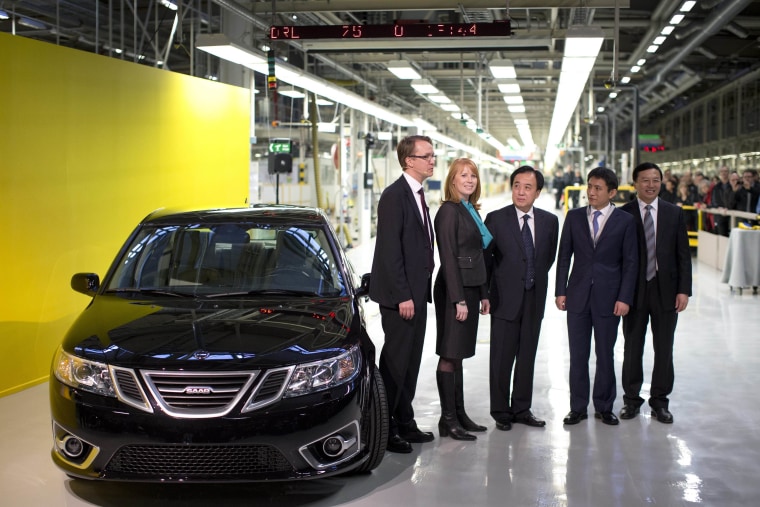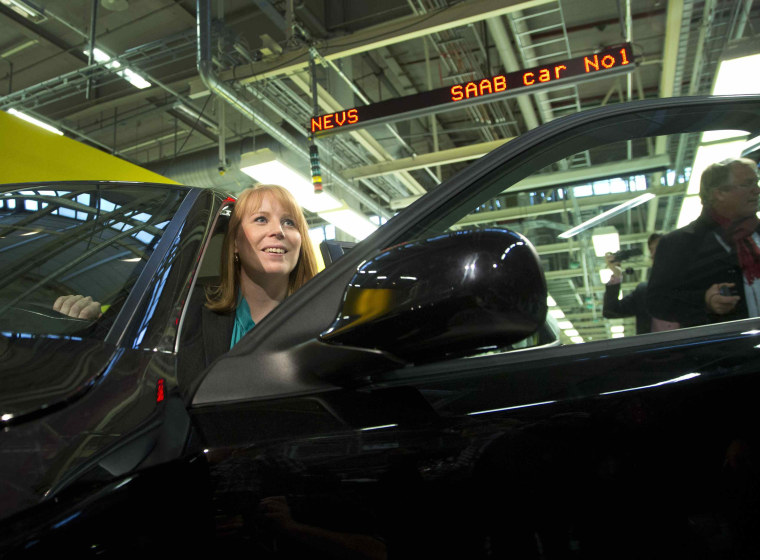
Could there be a happy ending, or more appropriately, a happy new beginning, for Saab?
After a shutdown of more than 2 ½ years that saw the Swedish car maker go bankrupt, new owners have fired up the assembly line and rolled out a new Saab 9-3 Aero. The question is whether the plant will be able to keep going under control of a Chinese-Japanese consortium that eventually wants to shift production to a new line of electric vehicles.
For now, production at the old Saab plant in Trollhattan, Sweden, will be limited to “small and humble numbers,” said Mikael Ostlund, the spokesman for Hong Kong-based National Electric Vehicle Sweden.
Known as NEVS, the firm picked up the key assets of Saab Automobile, including the company’s headquarters and assembly plant, following Saab’s filing for bankruptcy in December 2011. The collapse was the seeming end of the story for a company that had faced a series of financial hurdles since its founding in 1947.
Owned for a decade by General Motors, the U.S. maker decided to sell off its money-losing Swedish subsidiary following its own 2009 bankruptcy. The buyer was an underfunded Dutch firm, sports car manufacturer Spyker.
Short of cash, Saab’s assembly lines shut down in April 2011 when unpaid suppliers staged a boycott. Spyker’s founder and Saab’s new Chairman Victor Muller frantically went searching for new funding, but GM refused to approve plans to sell the company to one of several possible Chinese partners. That led to Saab’s eventual insolvency and, ironically, to its post-bankruptcy sale to NEVS.
The new owner started production with the old Saab 9-3 Aero model, with the first 200 saleable cars expected to reach European dealers next spring at a price of 279,000 Swedish kronor – or $42,500 – each. The vehicles will be powered by a turbocharged engine, but longer-term, NEVS plans to switch to a new all-electric drivetrain that will be introduced by the time Saab debuts in China later next year.
Specific details of that battery-based propulsion system have not yet been released. But NEVS is hoping that there could be a significant market for electric power in China as that country steps up efforts to deal with its endemic smog problem. A number of cities have put severe limits on the number of new vehicles that can be registered in a bid to reduce pollution. Beijing recently scaled back earlier quotas but offered easier registration for zero-emissions vehicles.
Specific, long-term production plans have also yet to be formalized, though it’s expected at least some of Saab’s production will eventually shift to China. The city of Qingdao owns a 22 percent share of NEVS through the Hong Kong holding company.
About 600 workers have been hired at the Swedish plant, down from a 3,500-worker peak. Restarting the Trollhattan plant was a challenge and involved negotiations with 400 suppliers for the 9-3. It is unclear if NEVS was required to cover at least some of the unpaid bills originally written off when Spyker put Saab into bankruptcy.
The old 9-3 model dates back to an old General Motors design. If NEVS can continue to move forward, it is expected to shift to a newer design developed for Spyker. It would be based on a sleek concept dubbed the Phoenix, a name that would seem even more appropriate if Saab can, indeed, rise from the dead.
Related stories:
GM Car Czar Mary Barra Named Top Global Busineswoman
Forget Those Old Econoboxes; Hyundai Wants to Sell You Luxury Cars
